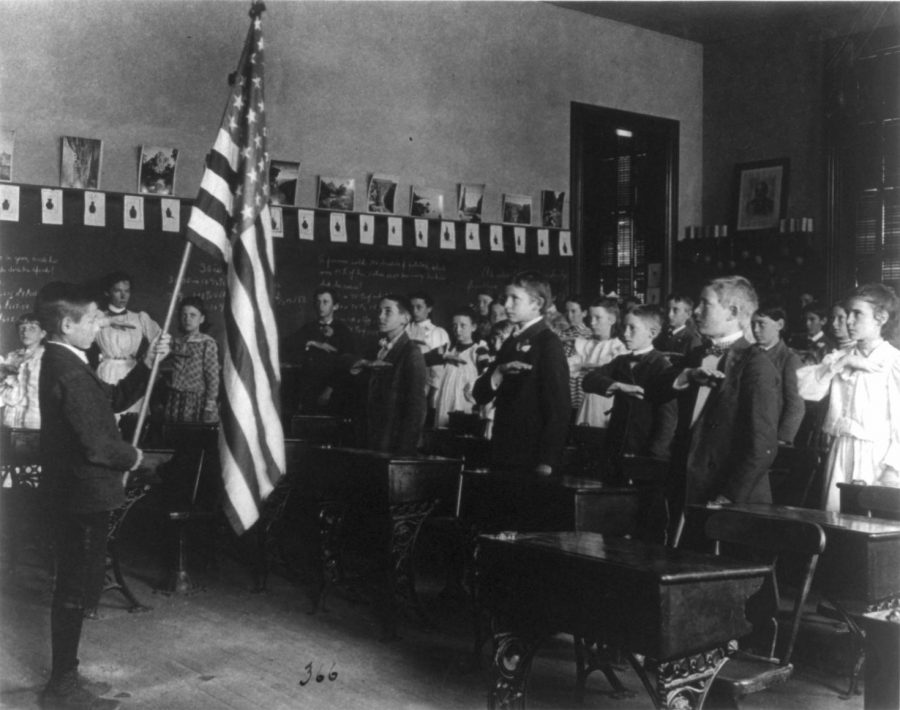Opinion: Stand or don’t, but understand what the flag stands for
More and more students express their freedom by choosing not to stand for the Pledge of Allegiance — which is okay, as long as they comprehend this patriotic tradition
Frances Benjamin Johnston
Students in the United States pledged their allegiance to the American flag well before 1942, when Congress formally adopted the Pledge—even as early as 1899, as in this image. In more modern times, students question whether the Pledge should be a required part of their day.
April 7, 2020
Since closing MCHS on March 17, students have participated in academic work on Schoology, but many have not recited the Pledge of Allegiance. At school, the Pledge was spoken over the PA system every morning, but many students fail to recite the Pledge on a day-to-day basis. Even before the COVID-19 pandemic, there was substantially less enthusiasm to say the Pledge—which is okay. At home or at school, people should feel comfortable choosing not to recite the Pledge of Allegiance as they are educated about the meaning of the flag that represents their country.
Students were taught to stand for the Pledge of Allegiance before they were taught the meaning behind the words in the Pledge. Some students cannot remember being taught the meaning behind the Pledge at all, so they had to do research on their own. This is how many high schoolers discovered that they wanted to protest the Pledge of Allegiance by sitting down.
Joseph Kalisek, a special education teacher at west and an Army veteran of 30 years, ensures that all of his students were given proper instruction on the Pledge of Allegiance. “In my classroom,“ he says. “From the beginning of the year to the end, there are fewer than 10% who remain seated and that is allowed only because I have educated them on every word, pause, meaning and reasoning for the flag etiquette we have in our country.”
A student at MCHS, who prefers to remain anonymous, believes that it’s not the teacher’s job to encourage a student to stand up during the Pledge of Allegiance. “If a student doesn’t want to stand up that’s their choice,” says a student at MCHS who prefers to remain anonymous, “However if a teacher still wants to stand and say the Pledge, they should be able to.”
However, since Kindergarten it’s always been the teacher’s responsibility to show students flag etiquette.
Many students don’t mind reciting the Pledge of Allegiance respectfully, however, in some cases, they lack enthusiasm. So, if the classroom is not loud, or there are not many people standing saying the Pledge of Allegiance, then they too will choose not to participate.
Regardless, if the classroom is as quiet as sitting in the library, I still stand. All it takes is one person to rise, and another person will join in.
Learning about flag etiquette is important going into adulthood because there are proper ways to fold flags, and even dispose of flags. Teaching students the Pledge of Allegiance is just the basics. Since symbols are controversial, it is important for people to respectfully, agree to disagree, on the symbolism of the flag.
If students today do not understand why they stand for the flag, they should be concerned, for the tradition is already crumbling. The flag is more than a representation of our society; it honor the country and all who have sacrificed their lives for our freedom.











